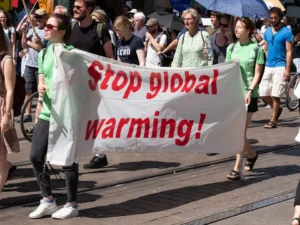Global warming is one of the most urgent environmental issues today. In fact, scientists and policymakers worldwide have debated its implications. As a result, a critical threshold has been set: 1.5°C. Although this limit may seem small, it represents a turning point beyond which climate change could become catastrophic. Therefore, understanding why this number was chosen is crucial for grasping the urgency to reduce emissions.
The Origins of the 1.5°C Threshold in Global Warming
The 1.5°C target emerged from the 2015 Paris Agreement, a landmark international treaty. Initially, negotiators recognized that allowing the global temperature to rise beyond this limit would cause severe consequences. Furthermore, the scientific community had already shown that even a 2°C rise would result in significant damage to human and natural systems.
Moreover, the Intergovernmental Panel on Climate Change (IPCC) released a report in 2018. The report showed the devastating effects of a 2°C rise. According to their findings, limiting global warming to 1.5°C would reduce extreme weather events, rising sea levels, and biodiversity loss. In addition, avoiding this threshold would protect food security, human health, and economic stability. Therefore, 1.5°C became the global goal.
Impacts of Exceeding the 1.5°C Limit

If the global temperature rises past 1.5°C, the world will face more frequent and intense climate events. For instance, heatwaves, droughts, and heavy rainfall will disrupt agriculture and cause water shortages. As a result, coastal cities and islands will be at greater risk of flooding due to rising sea levels, forcing millions to migrate.
Moreover, coral reefs, which are sensitive to temperature changes, will experience mass bleaching and collapse. This would lead to the loss of biodiversity and harm marine life. Consequently, the effects will hurt both the environment and human livelihoods.
Why 1.5°C and Not a Higher Threshold in Global Warming?
The 1.5°C target was chosen based on scientific evidence and what is politically feasible. Although limiting warming to 1.5°C may be difficult, we can still achieve it with immediate and transformative action. This requires significant cuts in greenhouse gas emissions, transitioning to renewable energy, and improving energy efficiency. Therefore, 1.5°C was set as a goal that balances environmental protection with economic growth.
Additionally, the target was chosen not only to prevent the worst consequences but also to allow for sustainable development. Many developing countries feared that stricter targets would hinder economic growth. As a result, a compromise was reached. The 1.5°C target was seen as ambitious but attainable.
Pathways to Achieving 1.5°C
Achieving the 1.5°C target requires global cooperation and immediate action. To begin with, developed countries must take the lead and reduce greenhouse gas emissions to net zero by mid-century. In addition, the world must transition from fossil fuels to renewable energy sources like wind, solar, and hydropower.
Furthermore, carbon capture and storage technologies will be crucial. This could involve capturing carbon dioxide from the atmosphere and storing it underground or using it in industrial processes. Thus, we will need innovative solutions and changes in consumption to meet the goal.
Nevertheless, we must make progress on multiple fronts. For example, countries must increase energy efficiency, adopt sustainable agriculture, and invest in emission-reducing technologies. Moreover, policies and incentives for cleaner practices are essential to driving global change. Only by acting together can the world reach this goal.
The Role of Global Collaboration
The 1.5°C target cannot be reached without collective global action. Consequently, all countries must contribute, regardless of their economic status. While wealthy nations bear a greater responsibility due to their historical emissions, developing nations must also adopt strategies to mitigate climate change.
In addition, global financial support is vital for developing countries. International cooperation, both financially and technologically, will ensure that these nations can meet their climate targets. Without a doubt, the most vulnerable nations will need assistance to adapt to climate change.
Conclusion: The Urgency of Action
The 1.5°C threshold is more than just a number; it is a symbol of global commitment to fight climate change. By addressing global warming’s causes and reducing emissions quickly, we can still avoid the worst impacts. However, the time for action is running out. If we fail, we risk irreversible damage to ecosystems and societies. Therefore, the next few years will determine whether we stay within this critical threshold. The question is no longer if we can afford to act, but if we can afford not to.
